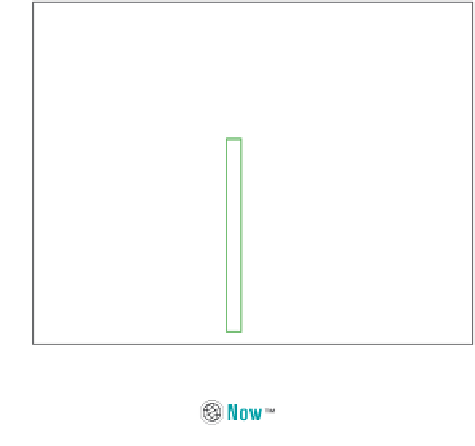Environmental Engineering Reference
In-Depth Information
world, a rapidly growing population reaches some
size limit imposed by one or more limiting factors,
such as light, water, space, or nutrients, or by too many
competitors or predators.
There are always limits to pop-
ulation growth in nature.
This is an important lesson
from nature.
Environmental resistance
consists of all factors
that act to limit the growth of a population. Together,
biotic potential and environmental resistance deter-
mine the
carrying capacity (
K
):
the number of individ-
uals of a given species that can be sustained indefi-
nitely in a given space (area or volume). The growth
rate of a population decreases as its size nears the car-
rying capacity of its environment because resources
such as food and water begin to dwindle.
Environmental
resistance
Carrying capacity (K)
Biotic
potential
Exponential
growth
Time (t)
Exponential and Logistic Population
Growth: J-Curves and S-Curves
With ample resources, a population can grow rapidly.
As resources become limited, its growth rate slows
and levels off.
A population with few, if any, resource limitations
grows exponentially at a fixed rate such as 1% or 2%.
Exponential growth
starts slowly but then accelerates as
the population increases because the base size of the
population is increasing. Plotting the number of indi-
viduals against time yields a J-shaped growth curve
(Figure 6-11, bottom half of curve).
Logistic growth
involves exponential population
growth followed by a steady decrease in population
growth with time until the population size levels off
(Figure 6-11, top half of curve). This slowdown occurs
as the population encounters environmental resistance
and approaches the carrying capacity of its environ-
ment. After leveling off, a population with this type of
growth typically fluctuates slightly above and below
the carrying capacity.
A plot of the number of individuals against time
yields a sigmoid, or S-shaped, logistic growth curve
(the whole curve in Figure 6-11). Figure 6-12 depicts
such a curve for sheep on the island of Tasmania,
south of Australia, in the early 19th century.
Active Figure 6-11
Natural capital:
no population can grow
forever.
Exponential growth
(lower part of the curve) occurs
when resources are not limiting and a population can grow at its
intrinsic rate of increase
(
r
) or biotic potential. Such exponential
growth is converted to
logistic growth,
in which the growth rate
decreases as the population becomes larger and faces envi-
ronmental resistance. Over time, the population size stabilizes
at or near the
carrying capacity
(
K
) of its environment, which re-
sults in a sigmoid (S-shaped) population growth curve. De-
pending on resource availability, the size of a population often
fluctuates around its carrying capacity.
See an animation based
on this figure and take a short quiz on the concept.
2.0
Overshoot
Carrying capacity
1.5
1.0
.5
1800
1825
1850
1875
1900
1925
Year
Figure 6-12
Boom and bust:
logistic growth
of a sheep popula-
tion on the island of Tasmania between 1800 and 1925. After
sheep were introduced in 1800, their population grew exponen-
tially thanks to an ample food supply. By 1855, they had overshot
the land's carrying capacity. Their numbers then stabilized and
fluctuated around a carrying capacity of about 1.6 million sheep.
Learn how to estimate a population of butterflies and see a
mouse population growing exponentially at Environmental
ScienceNow.
Exceeding Carrying Capacity: Move, Switch
Eating Habits, or Decline in Size
When a population exceeds its resource supplies,
many of its members will die unless they can switch to
new resources or move to an area with more resources.
Some species do not make a smooth transition from
exponential growth to logistic growth. Such popu-
lations use up their resource supplies and temporar-
ily
overshoot,
or exceed, the carrying capacity of their



































